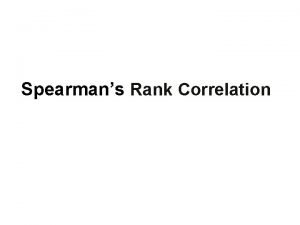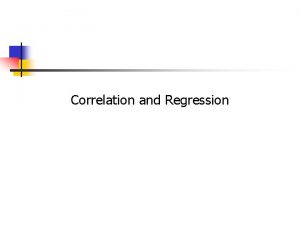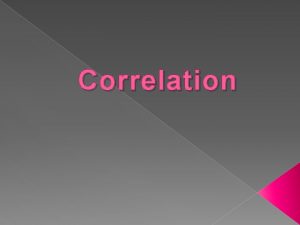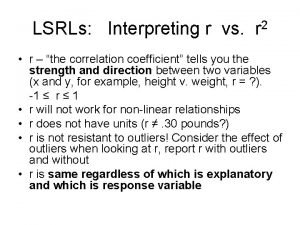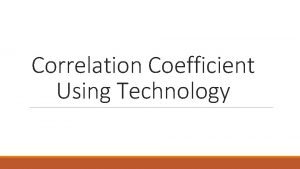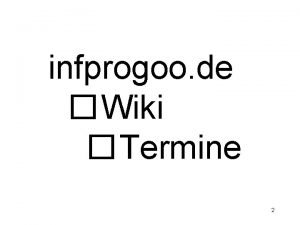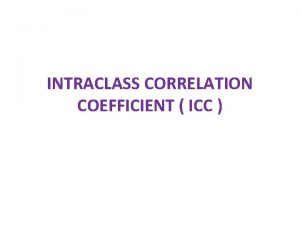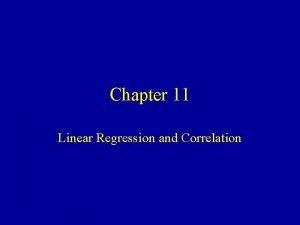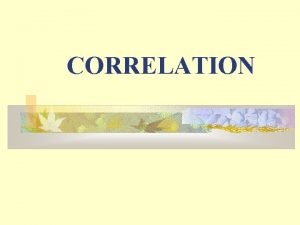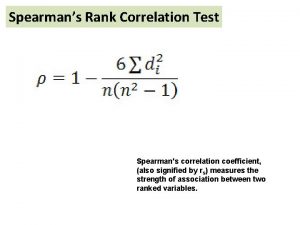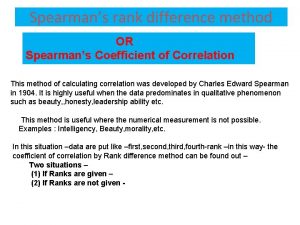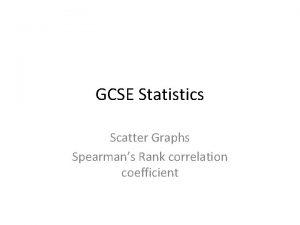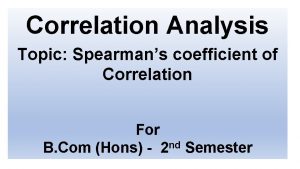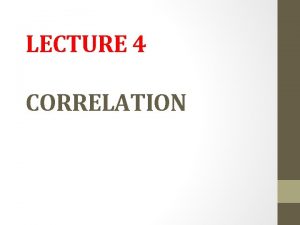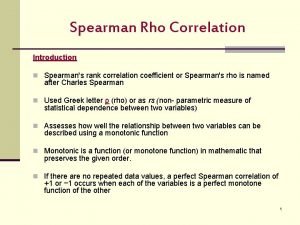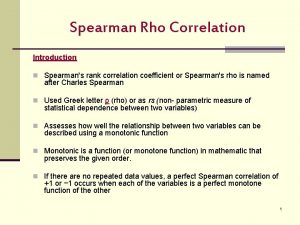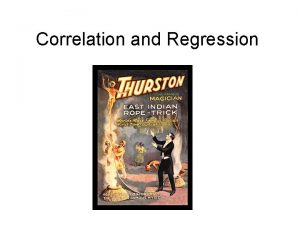Spearmans Rank Correlation Spearmans Rank Correlation Coefficient Measures









- Slides: 9

Spearman’s Rank Correlation

Spearman’s Rank Correlation Coefficient • Measures correlation between ranks • Corresponds to Pearson product moment correlation coefficient • Values range from – 1 to +1 • Formula (shortcut) di = ui – vi (difference in ranks of ith observation for samples 1 and 2) n = number of pairs of observations

Spearman’s Rank Correlation Procedure 1. Assign ranks, Ri , to the observations of each variable separately 2. Calculate differences, di , between each pair of ranks 3. Square differences, di 2, between ranks 4. Sum squared differences for each variable 5. Use shortcut approximation formula

Spearman’s Rank Correlation Example You’re a research assistant for the FBI. You’re investigating the relationship between a person’s attempts at deception and percent changes in their pupil size. You ask subjects a series of questions, some of which they must answer dishonestly. At the. 05 level of significance, what is the correlation coefficient? Subj. 1 2 3 4 5 Deception 87 63 95 50 43 Pupil size 10 6 11 7 0

Spearman’s Rank Correlation Table Subj. Decep. 1 2 3 4 5 87 63 95 50 43 R 1 i Pupil 4 3 5 2 1 10 6 11 7 0 2 R 2 i di di 4 2 5 3 1 0 -1 0 Σdi 2= 0 1 0 2

Spearman’s Rank Correlation Solution

Correlation using Rstudio 0 Hours, x Test score, y 96 1 85 2 82 3 74 3 95 5 68 x<- c(0, 1, 2, 3, 3, 5, 5, 5, 6, 7, 7, 10) y<- c(96, 85, 82, 74, 95, 68, 76, 84, 58, 65, 75, 50) cor(x, y) [1] -0. 8312962 cor. test(x, y) data: x and y t = -4. 7295, df = 10, p-value = 0. 0008048 alternative hypothesis: true correlation is not equal to 0 95 percent confidence interval: -0. 9513335 -0. 4922277 sample estimates: cor -0. 8312962 5 76 5 84 6 58 7 65 7 75 10 50

Plot X and Y using Rstudio 0 Hours, x Test score, y 96 1 85 2 82 3 74 3 95 5 68 x<- c(0, 1, 2, 3, 3, 5, 5, 5, 6, 7, 7, 10) y<- c(96, 85, 82, 74, 95, 68, 76, 84, 58, 65, 75, 50) cor(x, y) [1] -0. 8312962 cor. test(x, y) data: x and y t = -4. 7295, df = 10, p-value = 0. 0008048 alternative hypothesis: true correlation is not equal to 0 95 percent confidence interval: -0. 9513335 -0. 4922277 sample estimates: cor -0. 8312962 5 76 5 84 6 58 7 65 7 75 10 50

cor(x, y = NULL, use = "everything", method = c("pearson", "kendall", "spearman")) Dec<-c(87, 63, 95, 50, 43) Pup<-c(10, 6, 11, 7, 0) Data<-data. frame(cbind(Dec, Pup)) cor(Dec, Pup, method="spearman")
 What is the fbi
What is the fbi Spearman's rank correlation coefficient for repeated ranks
Spearman's rank correlation coefficient for repeated ranks Product moment correlation coefficient
Product moment correlation coefficient Meaning of correlation analysis
Meaning of correlation analysis R squared vs correlation coefficient
R squared vs correlation coefficient Correlation coefficient google sheets
Correlation coefficient google sheets Correlation coefficient
Correlation coefficient Intraclass correlation coefficient
Intraclass correlation coefficient Absolute value of correlation coefficient
Absolute value of correlation coefficient Karl pearson coefficient of correlation example
Karl pearson coefficient of correlation example
